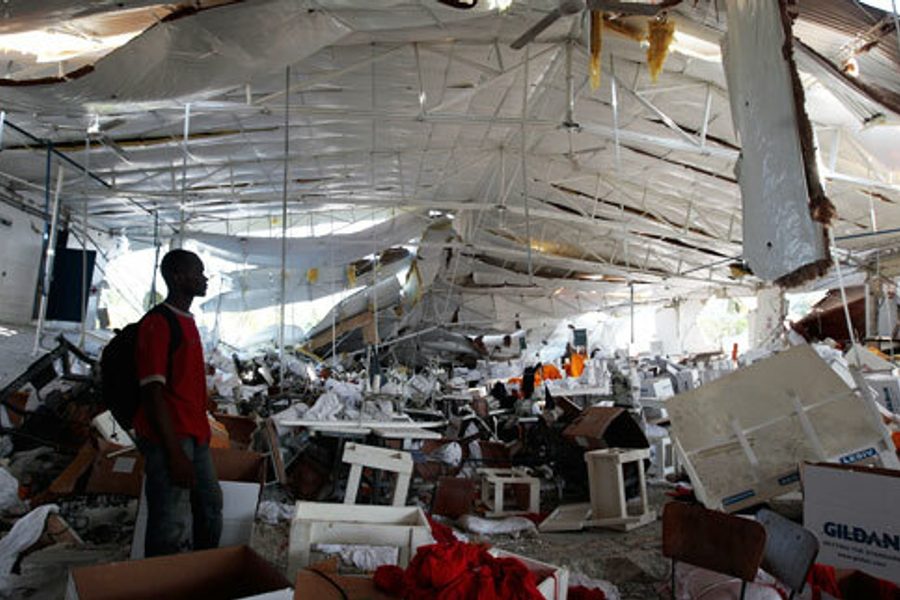
Next Monday, former presidents Bill Clinton and George W. Bush head to Haiti, giving high-profile attention to the earthquake-ravaged country – which soon faces hurricane season – a little more than a week before a UN conference of donor nations meets in New York.
The Haitian government says the country needs $11.5 billion for reconstruction, but the donor countries are expected to pledge $3.8 billion – and fail to contribute anywhere near that if previous pledge patterns prevail.
The small, fragmented Haitian labor movement – backed by international labor groups and the AFL-CIO’s Solidarity Center – has a message for the donors.
“That investment strategy has to be for good jobs, not just jobs at the current minimum wage of US$5 a day,” says Cathy Feingold, Solidarity Center representative for the Dominican Republic and Haiti. “Now aid organizations are providing cash for work, cleaning up after the earthquake at that minimum wage. That can’t be the model, hiring people at $5 a day without healthcare, pension, or a right to organize. If it’s just creating more sweatshops, Haiti does not need more of that.”
Even if reconstruction contracts to multinational corporations like Bechtel, Feingold says, Haitian unions and their international labor supporters – who will hold their own global summit on Haiti’s future in early April – insist that the jobs and training necessary to perform them should go to Haitian workers.
Apparel sweatshops have expanded in Haiti, even as they flee higher-wage Dominican Republic, and about 18 factories employed 25,000 workers – with only one unionized factory – before the earthquake. Many development advisors see garment work, which accounted for three-fourths of the country’s exports, as Haiti’s best hope. But the factories simply take advantage of cheap sewing labor without developing the economy or providing help for the vast majority of Haitians who are poor rural peasants or unemployed city dwellers at best involved in the informal economy.
When the earthquake hit in January, Solidarity Center hurriedly provided relief, working through its previously established relationships with Haitian unions and allies in the informal economy and peasantry. The unions provided a means of distributing the aid, but the aid was also aimed to strengthen the unions’ ability to function in a society desperately in need of its own social organizations.
But even as relief efforts continue providing aid from tents to solar panels for a country largely lacking reliable water or power or a functioning school system, Solidarity Center — the international union training and support arm of the AFL-CIO, which is largely funded by government grants — and other unions are focusing on development and job creation.
The unions and international allies are also fighting for workers’ rights to organize, including workers in the informal sector. Most union members before the earthquake were employed in the public sector, and private sector workers trying to organized were typically fired or threatened with death, Feingold says. The government rarely enforced laws protecting workers, and the nation’s few factory owners insisted they could not flourish if workers organized unions.
Now many of the factories, often in free trade zones like Sonapi in the capital, Port-au-Prince, may not be structurally sound, a concern for workers especially since 500 people were killed in one factory that collapsed in the quake.
The fight for development ultimately may end up being a fight not only to make the new investment and donation create good jobs for Haitians but also a fight simply to make sure the aid comes through. As Feingold observes, “usually everyone makes huge promises and nothing happens.”
David Moberg, a former senior editor of In These Times, was on staff with the magazine from when it began publishing in 1976 until his passing in July 2022. Before joining In These Times, he completed his work for a Ph.D. in anthropology at the University of Chicago and worked for Newsweek. He received fellowships from the John D. and Catherine T. MacArthur Foundation and the Nation Institute for research on the new global economy.








